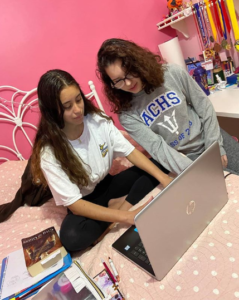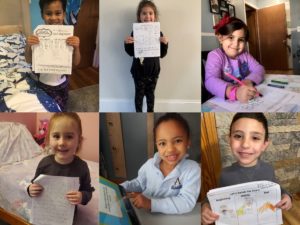Keeping students engaged and learning presents many challenges during the coronavirus pandemic. It is important not to let students fall through the cracks, and so, here at Atlantis, we are taking a very deliberate approach to remote learning.
First, we made sure all families could access remote learning, which meant having “paper and pencil” resources. Next, we worked to fill in gaps in resources by providing school Chromebooks to families and connecting families to internet service providers that are offering support to low-income families. As we ramped up our remote learning, we began to use our existing online education tools in addition to teacher-created materials.
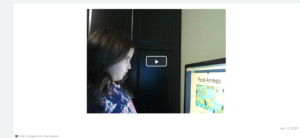
Raz-Kids is a leveled reader program that allows students to practice reading skills at any time
“Using resources that our students and families were already familiar with cut down on the learning curve during an already stressful time and helped with the transition to online remote learning,” said Robert Beatty, executive director of Atlantis. “Then we looked for gaps in communication, instruction and student support, and identified additional online resources available to fill those gaps.”
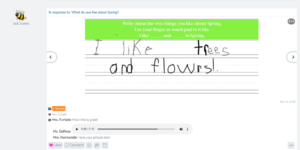
Kindergarten and first grade students use the See-Saw app to work on writing and math skills
The new online resources align vertically across our K-12 grade span and include Raz Kids, Reading Eggs, Math Seeds, Reflex, Imagine Learning, Study Island, BrainPop, Eureka, FossWeb, and Khan Academy. Applications such as SeeSaw for grades K-1 and Google Classroom for grades 2-12 are streamlining remote learning.
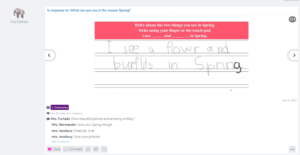
See-Saw allows students to mark directly on their tablet.
“Our goal is to create an online learning platform that serves us now and in the future,” Beatty said. “These resources will serve us for the rest of this academic year and in the event of further disruptions or closures due to possible spikes in COVID-19 in the coming months as social distances measures begin to ease.”
Teachers and paraprofessionals are engaging with students and families during, and outside of, daily office hours. Methods include pre-recorded lessons, presentations with a voice over, phone calls, sharing academic feedback on submitted work, and live small group/classroom experiences through Google Meet. General Education Teachers are collaborating with support staff in their team, consisting of Special Education teachers, Title I staff, ELL teachers, and paraprofessionals, to provide frequent feedback and reteach opportunities for work via phone or video conference.
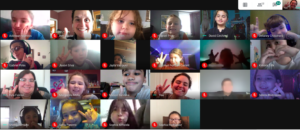
Teachers and students engage in small groups or with their entire class using Google Meet
Our special education team and service providers continue to work with the families of students on their caseload to develop individualized remote learning plans. Special education teachers and paraprofessionals, ELL teachers, school adjustment counselors, speech and occupational therapists, and physical therapists are connecting with families by phone, email & Google Meet. While Google Meet has proven to be effective in most areas, the occupational therapist and speech pathologist are exploring telehealth platforms to improve student engagement and instruction for more specialized services, including behavior health and occupational therapy.
Overall, the feedback from parents has been positive. “The school has done a great job with remote learning,” said Lydia Pires, whose sons Samuel (K), Gabriel (2), and Vincent (5) attend Atlantis. “The administration and teachers have done an awesome job communicating and supporting families through the process. My kids have gotten so much support from their teachers and I couldn’t be happier with how the school has handled everything.”
Remote learning does come at an added cost, not only for Atlantis, but for all schools. Many of the apps and websites we are using are free due to the pandemic, but it will be necessary to purchase subscriptions in the future. The school is applying for grant funding and seeking philanthropic partners to assist with the needed investments.
Our long-term goal is to have an online learning platform that will complement the instruction happening in our physical classrooms, while providing greater flexibility to students, teachers, and administrators, allowing expanded course offerings, adaptability to varying schedules, and broader supports for all learners. Many schools were already headed in this direction, the pandemic just got us there faster.
